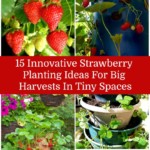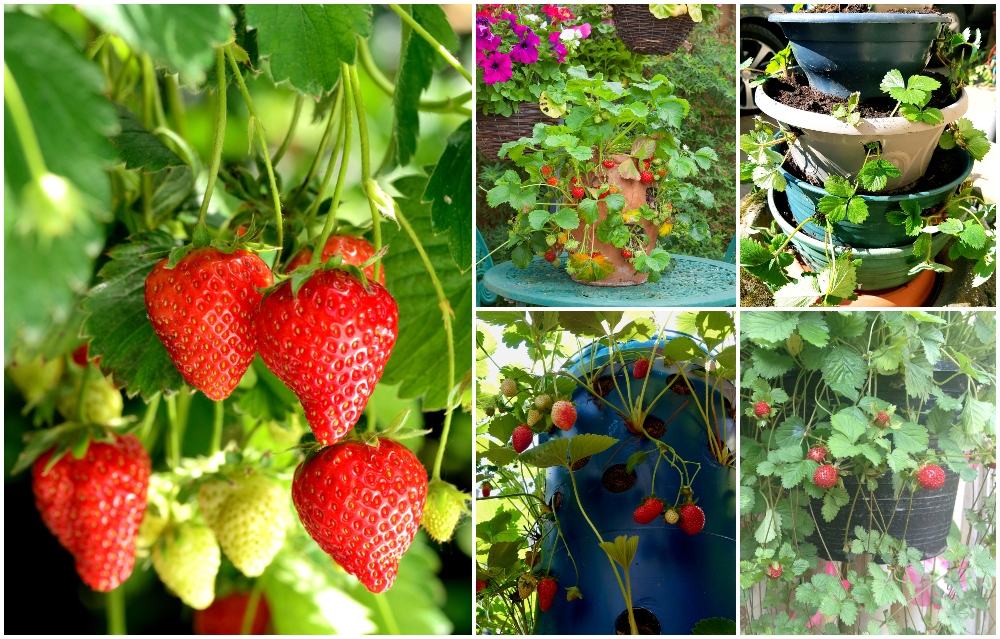
Strawberries are a wonderful crop to grow in your garden. They are incredibly easy, even for new gardeners who have yet to develop their green thumbs.
No matter how much space you have, or how little, you’ll be able to find the perfect place to grow some.
But where exactly should you grow your strawberries?
In this article, we’ll explore 15 different strawberry planting ideas to consider. You are sure to find a suggestion that will work perfectly for you, wherever you live.
1. Dedicated Strawberry Patch

The first and most obvious idea, if you want plenty of strawberries, is to grow them in a dedicated strawberry patch.
This could be in-ground, if the soil is suitable where you live. But it could also be a raised bed. If you do go for a raised bed, it could be either a traditional flat raised bed, or a hugelkultur mound.
Having a dedicated strawberry patch will mean that you can grow plenty of strawberries on your homestead.
But even with a dedicated patch, it is worthwhile incorporating companion plants to keep your strawberries growing strong. Herbs such as mint, chives, sage, caraway and thyme, and flowers like borage can all be excellent options, for example.
2. Perennial Strawberry Polyculture Bed
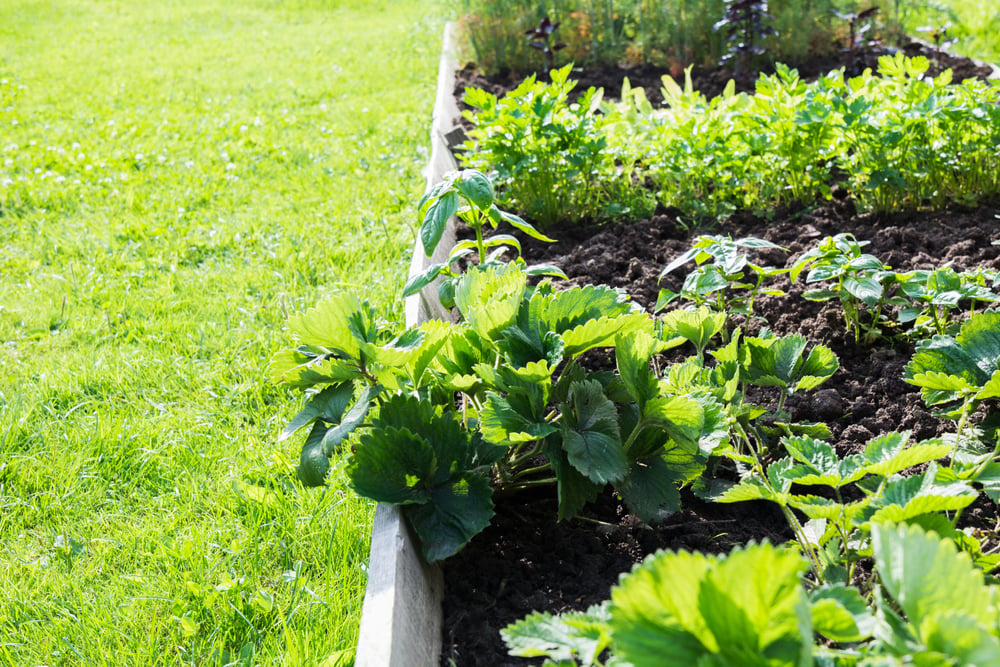
Another idea is to create a bed where strawberries are only one of the ‘stars of the show’.
Creating a bed with strawberries alongside other starring perennial plants can be another great idea where there is space to do so.
A raised bed or in ground growing area containing asparagus can be a good spot for strawberries too. They like similar conditions and can be grown alongside one another without competing for nutrients.
In a perennial polyculture bed containing strawberries and asparagus, you can also include other perennial plants, including the aromatic herbs mentioned above, and perennial plants in the allium (onion) family. You could also include plenty of perennial flowering plants, to bring in those pollinators and other beneficial insects.
3. Strawberries in a Fruit Tree Guild
Another great place to grow strawberries is around a fruit tree. Alpine or woodland strawberries in particular are great for inclusion in a fruit tree guild since they can cope with some dappled shade.
But even regular garden strawberries can be placed around the sunny, south facing edges of a fruit tree guild.
Strawberries can help the tree by providing good ground cover. But they will also be helped by the tree. The tree’s blossom can bring in pollinators, so they will be in the area by the time that your strawberries need them.
4. Strawberry Bed Edging for Annual Kitchen Gardens
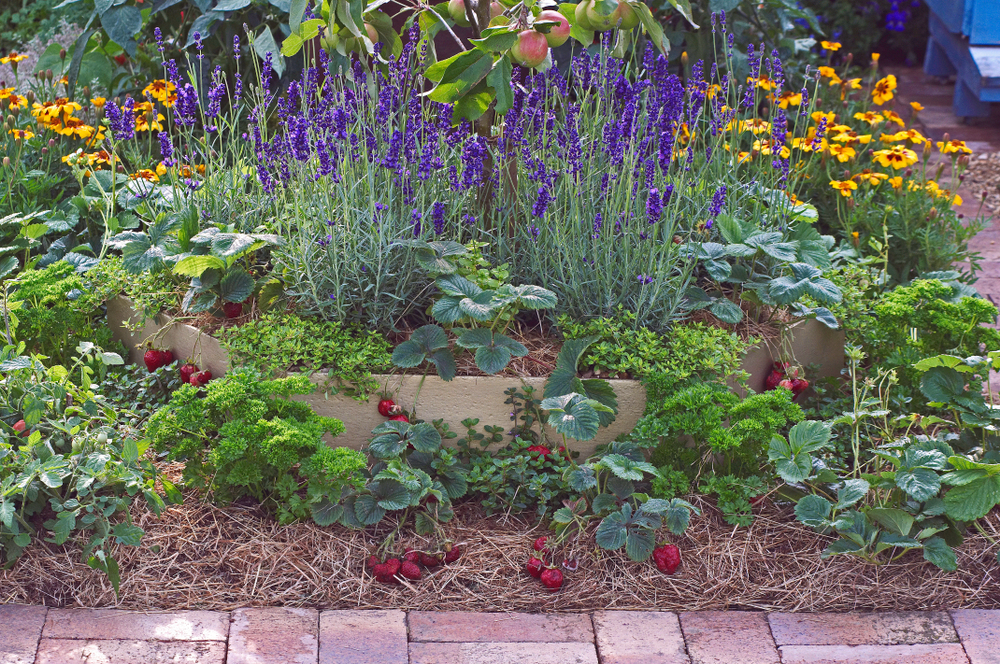
Garden bed edging does not have to be made of non-living materials. Bed edging can be made from living plants too – and strawberries can be the perfect candidates.
They spread well to reduce the encroachment of weeds. And they increase your yield by making the most of every inch of your garden – including those awkward edge areas and fringes.
Strawberries can’t just be used around the edges of a fruit tree guild, they can also be used to line the edges of any other garden bed or border, to skirt the sides of a driveway or path, or to softly denote the borders of a vegetable patch, for example.
5. Standard Strawberry Planters
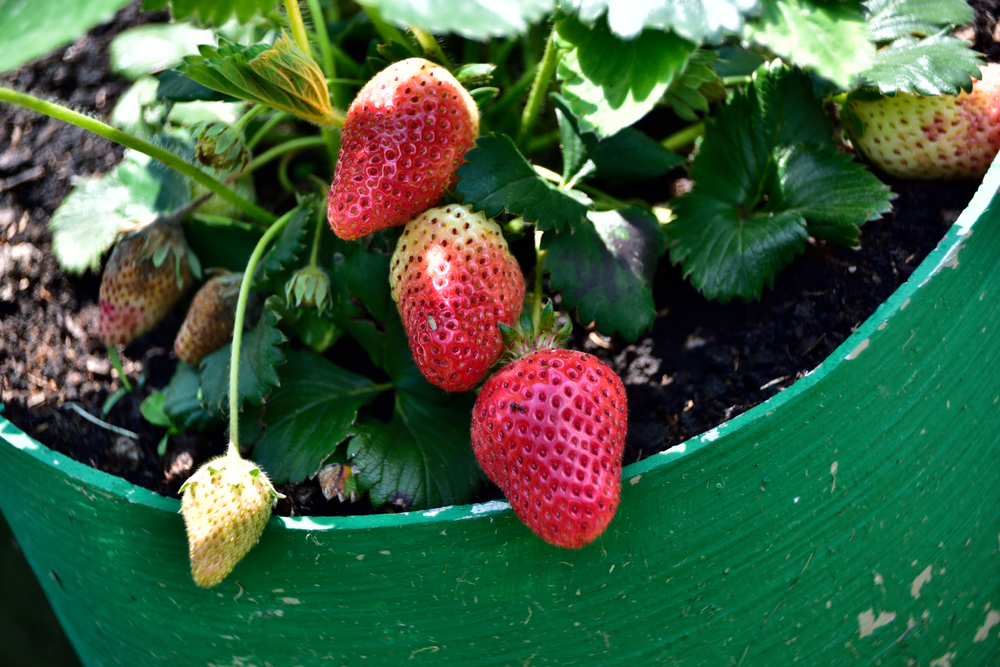
Of course, you don’t need to have in-ground growing space to grow strawberries in your garden. Strawberries also lend themselves very well to container growing.
Containers can be kept outside in your garden, on a patio, porch or balcony, in a greenhouse or polytunnel, or even inside your home.
Any traditional planter can be used to grow strawberries, either on their own or mixed in with ornamental flowers and other plants.
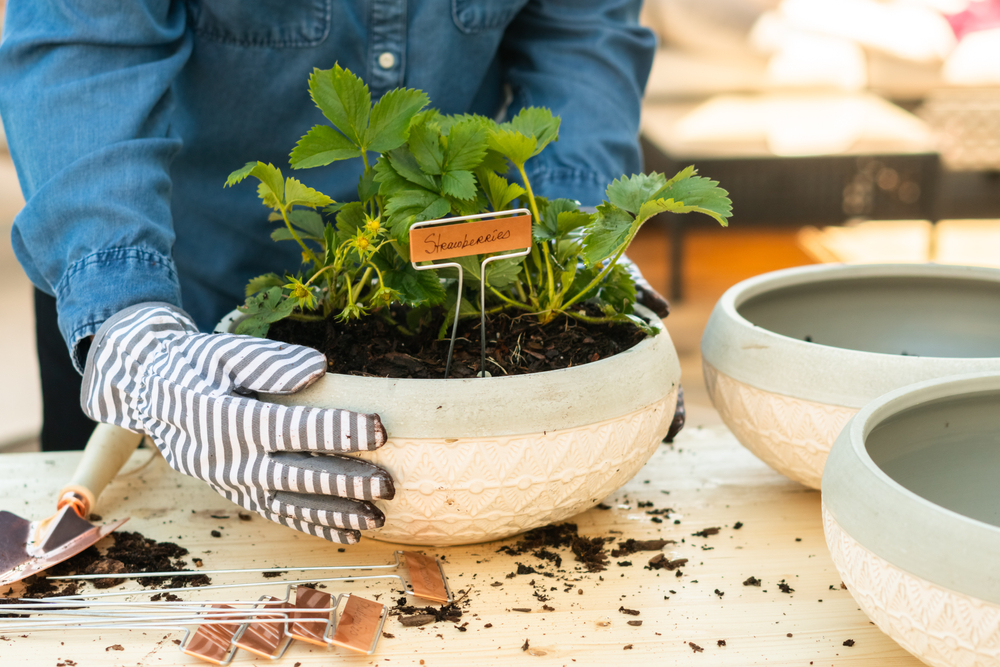
Of course, there are plenty of planters that you can buy. But it is also worthwhile remembering that there are many DIY and upcycling ideas that you could use to make your own.
6. Stacked Strawberry Planters
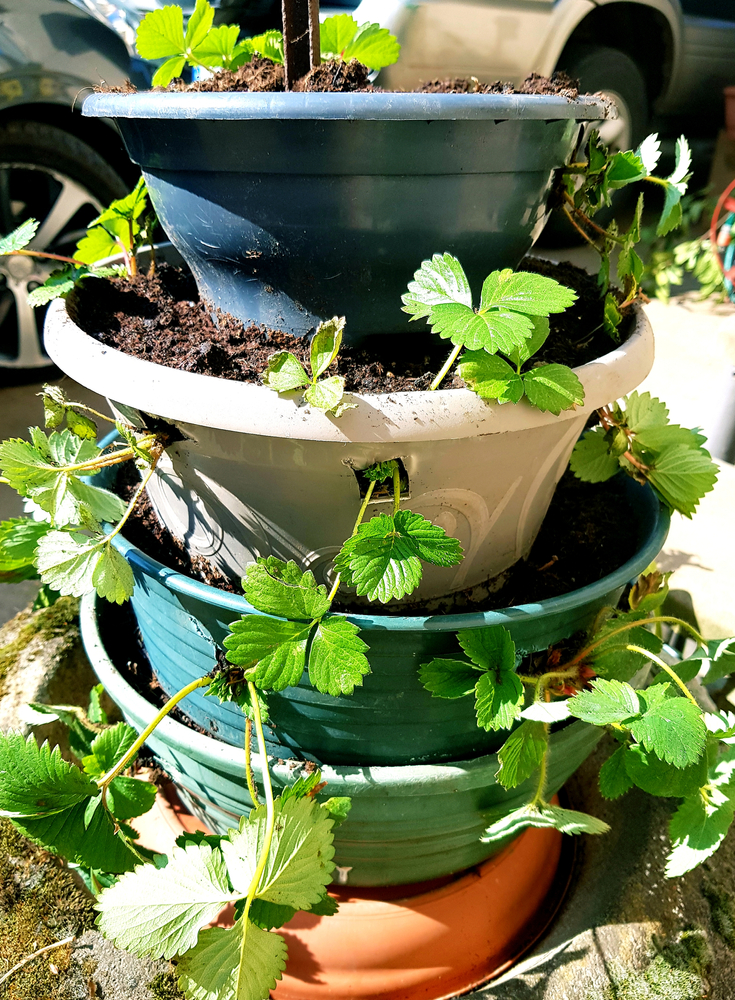
To make the most of the space you have available, you should also consider stacking containers to make stacked strawberry planters.
Place your largest container on the bottom, then a somewhat smaller one, and an even smaller one on top of that. Strawberries can be planted around the edges of the lower containers and to spill out of the container at the top.
7. Easy Water Strawberry Pots
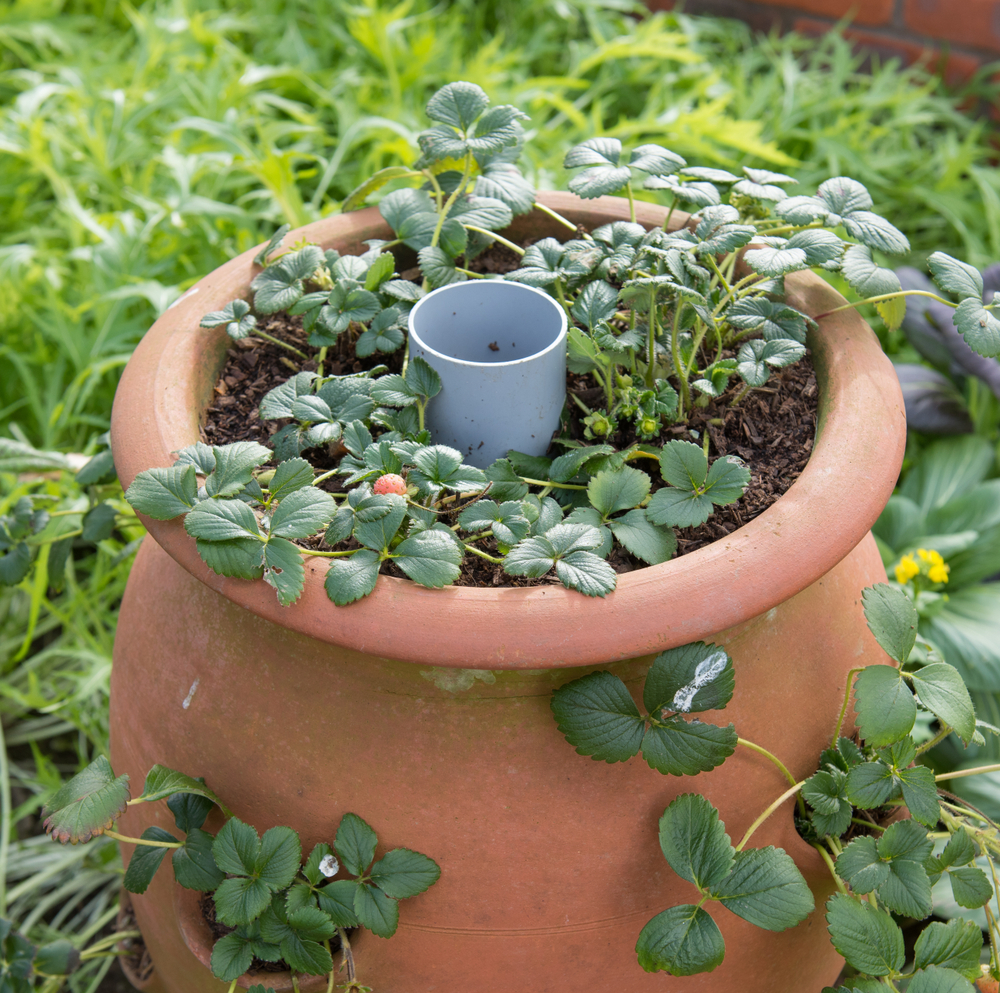
You can buy pots with holes in the sides of them that are specifically designed to hold your strawberry plants. But these can sometimes be difficult to water as the season progresses.
Check out this idea, which shows you how to make an easy to water strawberry pot.
This is a great hack for solving this common problem, and could be customised for several of these other strawberry garden design ideas.
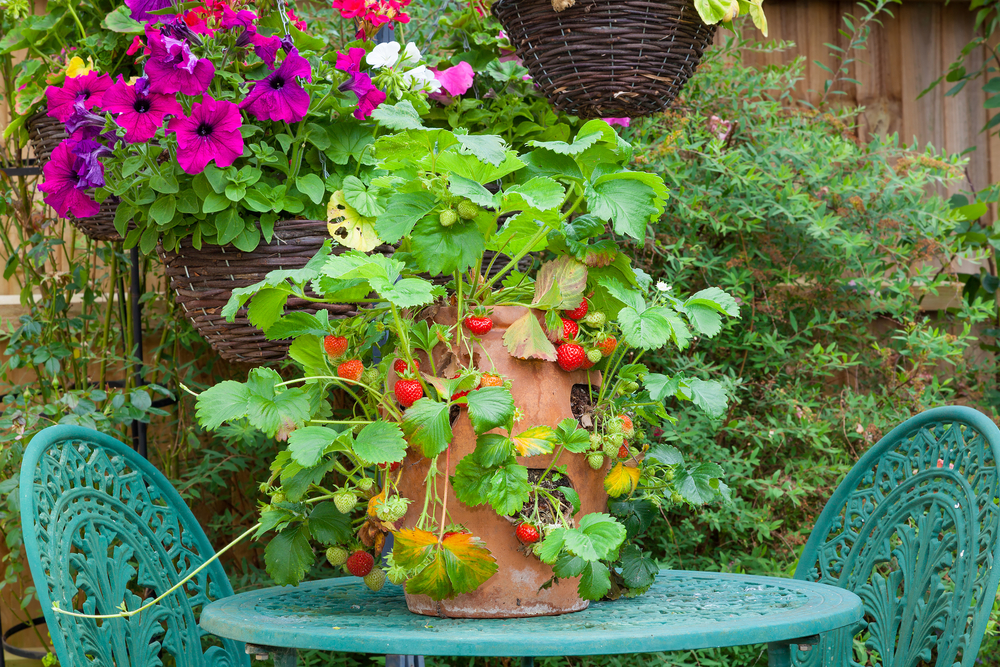
8. Strawberry ‘Fairy Garden’
No matter what kind of container you choose to grow strawberries in, you can consider turning your strawberry garden into a ‘fairy garden’.
This project, great for kids, is all about making a magical diorama as a backdrop for your fruits.
Choose a few other ‘magical’, child-friendly plants to grow alongside your strawberries. Then make a little path leading through them, and perhaps even a little fairy house at the end of it.
Fun as well as functional, a strawberry fairy garden is the perfect way to bring fairytales to life.
Looking for more inspiration for things to do with kids in your garden? Check out these 70 Garden Jobs to Enjoy With Kids This Spring.
9. Strawberry Planting Barrel
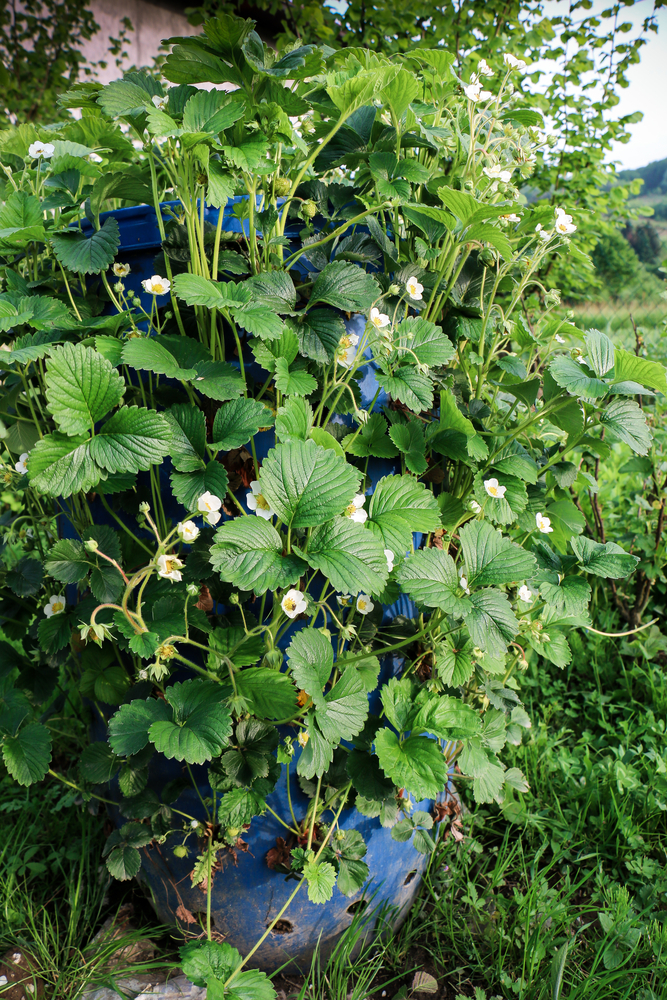
As mentioned above, you don’t need to buy a dedicated strawberry pot or planter to grow strawberries.
You can also use any number of reclaimed or upcycled items for the purpose. One great idea involves using an old 55 gallon barrel as a planter.
You can cut an old plastic barrel in half lengthways to make a couple of planters, saw one off to the required height, or simply plant into the top.
But with strawberries, you can also consider making holes in the sides and planting into these, as well as planting into the top of the barrel.
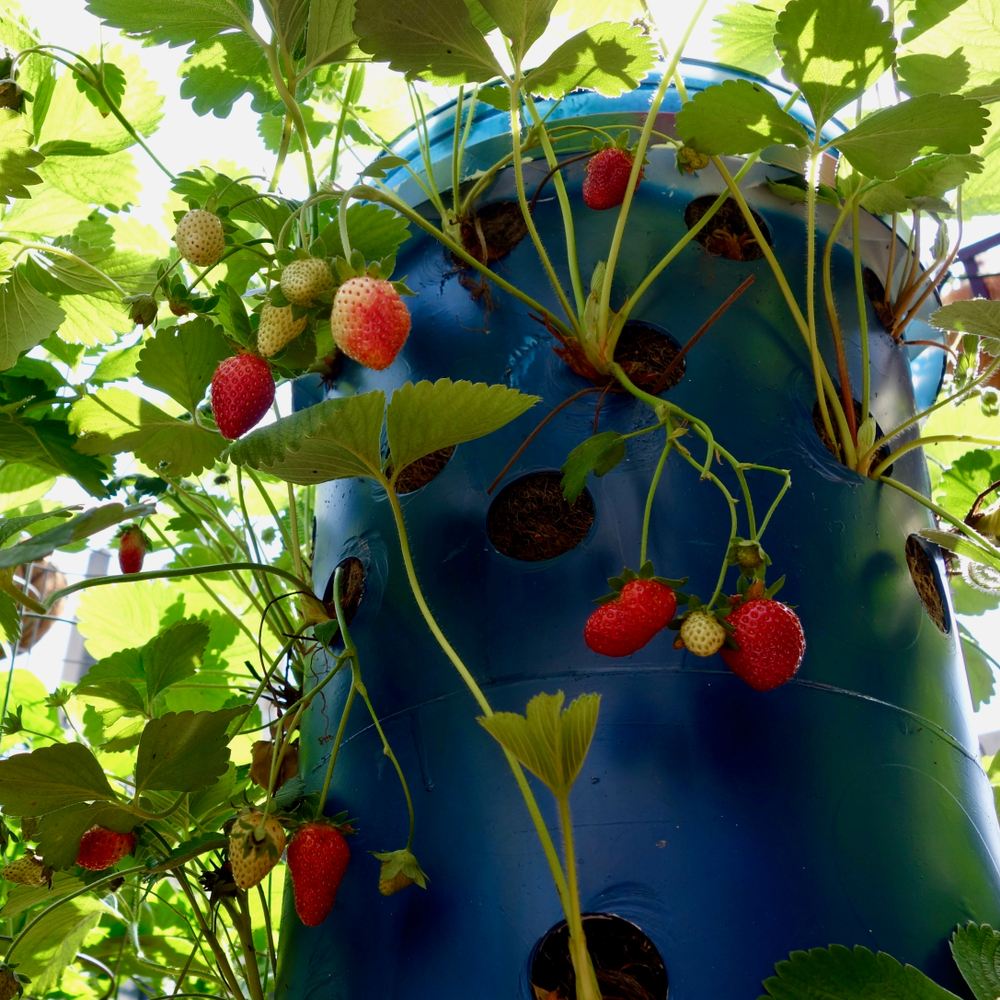
10. Strawberry Planting Tower
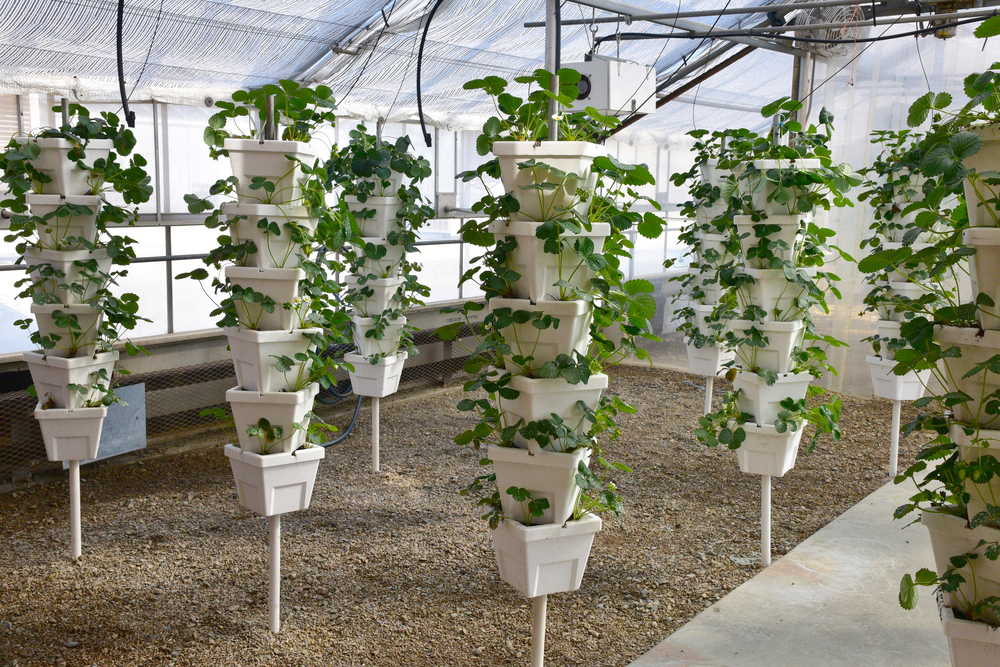
Another cool idea involves making a planting tower. This is another way to grow more strawberries in a smaller space. You can make use of a number of different items to make one.
For example, you can make a strawberry planting tower from old 5 gallon buckets and plastic drinks bottles.
DIY Strawberry Tower With Reservoir @ apieceofrainbow.com.
Or you could make a grand and impressive strawberry tower with wood:
Strawberry Tower @ finegardening.com.
You could even make a strawberry planter from PVC pipe.
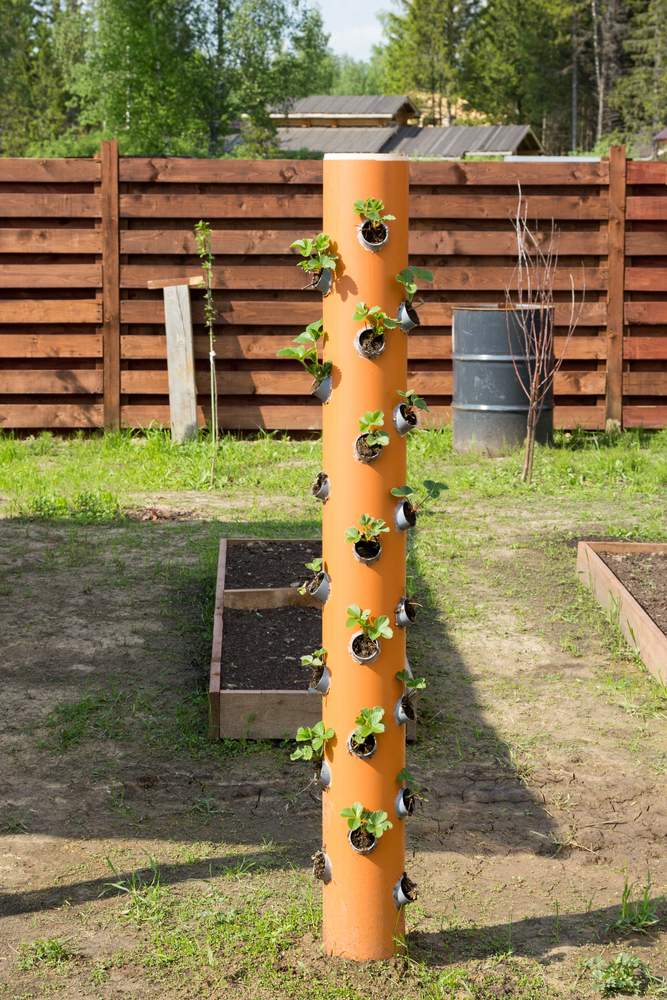
11. Strawberry Vertical Gardens
You can also make a vertical garden in several other ways. For example, you can make a strawberry vertical garden from old wood pallets.
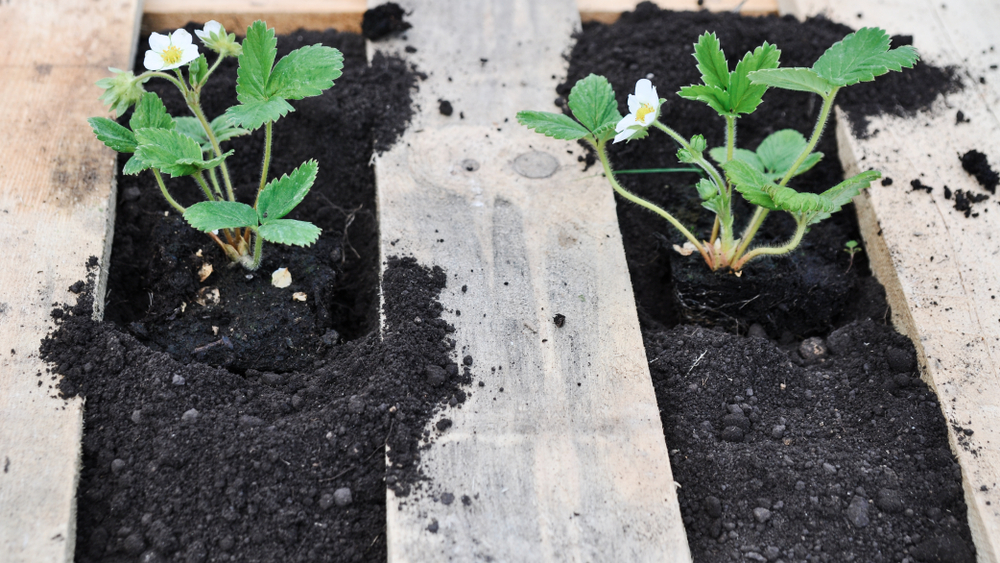
You can also make a vertical garden with planting pockets for your strawberries from old clothes.
You can create a fence with strawberries planted in it within old plastic bottles, or erect any number of DIY structures against a wall or fence using whatever items you have to hand.
12. Strawberries in Hanging Baskets
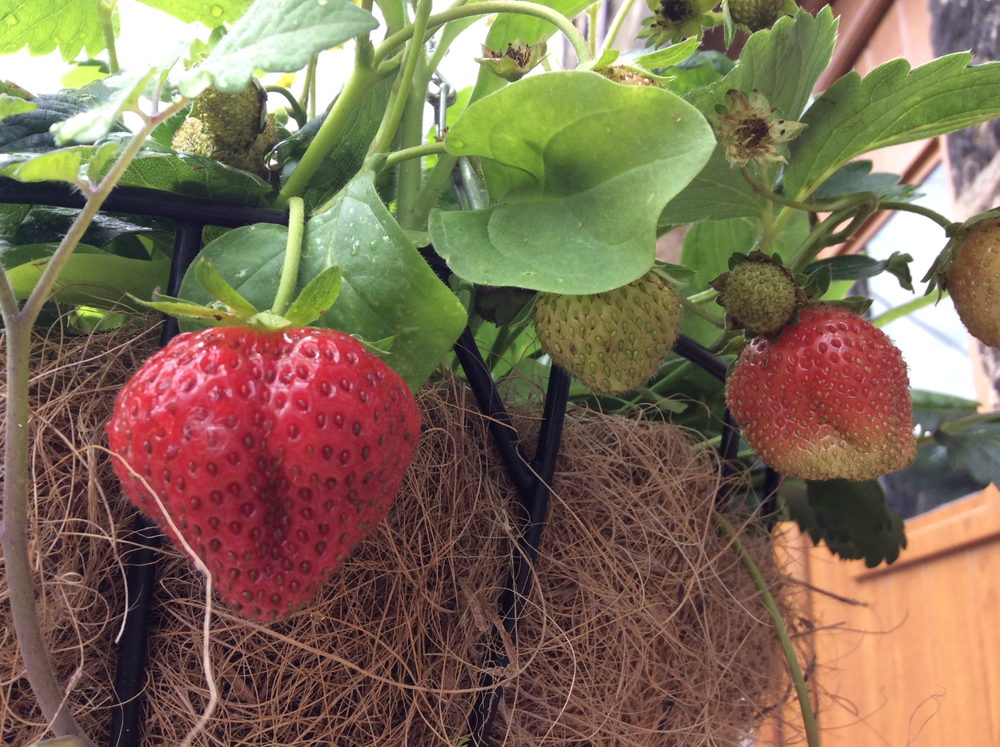
Hanging baskets are not just for flowers! You can also grow some strawberries (and other edible crops) in them.
As long as you make sure they are well watered throughout the summer months, hanging baskets can allow you to grow some strawberries even when you didn’t think you had any space at all.
You can simply plant up inside the top of the basket, or plant into the sides and base to allow some strawberries to dangle down.
13. Or Other Hanging Containers
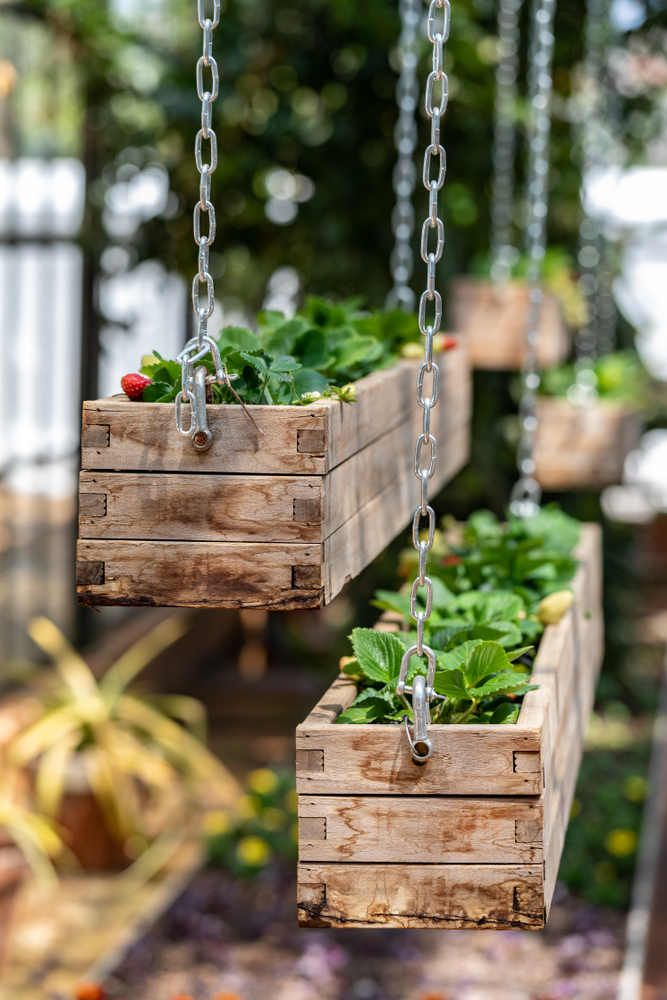
If you don’t have a hanging basket, it is worthwhile remembering that you might also be able to make your own hanging containers from other items you may have lying around.
For example, you could string a row of plastic tubs or plastic bottles from a wire (or washing line) and grow a strawberry plant in each.
You could also make your own hanging container or planter from old buckets, old clothing, or old kitchen utensils, to name just a few examples.
14. Strawberries in Reclaimed Guttering
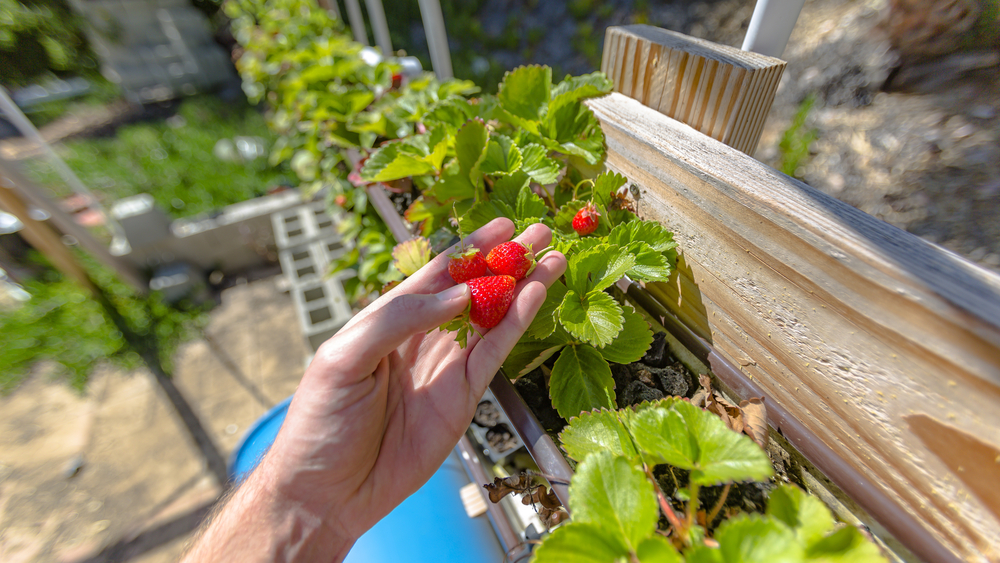
Another great idea for those who are short on space is to grow strawberry plants inside sections of reclaimed rain guttering.
In a 4 ½ foot section, you can grow three strawberry plants. You can affix a length of guttering along the railing of a porch or veranda, hang them from wires, or attach several one above the other to a wall or fence, for example.
So this is another great way to make use of every inch of your space.
15. Strawberry Hydroponic Garden
One final idea to consider is growing strawberries in nutrient-laden water rather than in soil. There are a number of different hydroponic systems that are simple and easy to implement in home gardens.
To go one stage further, you could even consider growing strawberries and fish – in an aquaponics system.
These are just a few simple ideas to help you decide how best to grow strawberries where you live. Which of these options is the right one for you?
More Strawberry Gardening Goodies
How To Plant a Strawberry Patch That Produces Fruit For Decades
7 Secrets for Your Best Strawberry Harvest Every Year
How To Grow New Strawberry Plants From Runners
11 Strawberry Companion Plants (& 2 Plants To Grow Nowhere Near)
How to Make an Easy to Water Strawberry Pot
10 Fantastic and Unusual Strawberry Recipes that go Beyond Jam

Get the famous Rural Sprout newsletter delivered to your inbox.
Join the 50,000+ gardeners who get timely gardening tutorials, tips and tasks delivered direct to their inbox.


